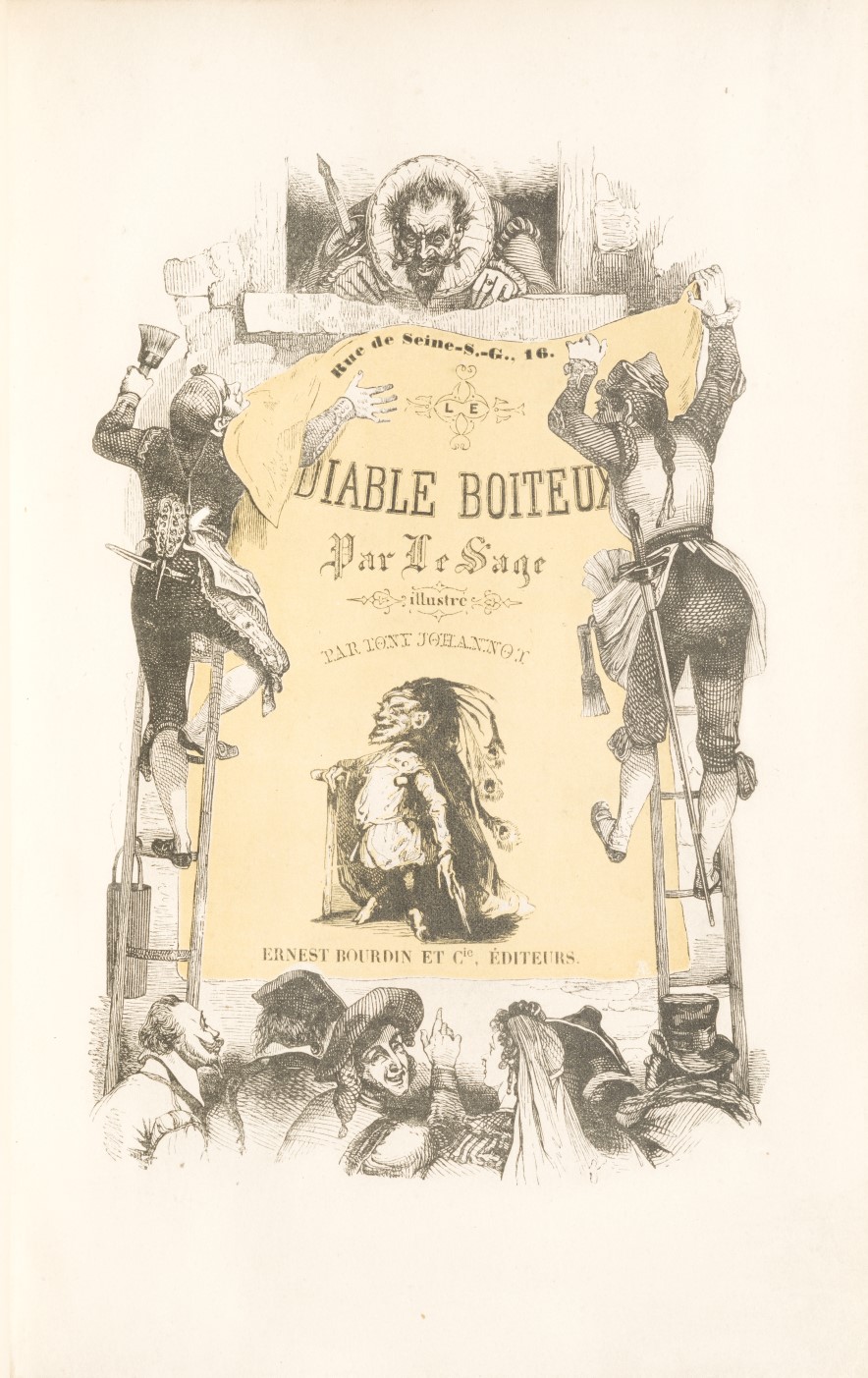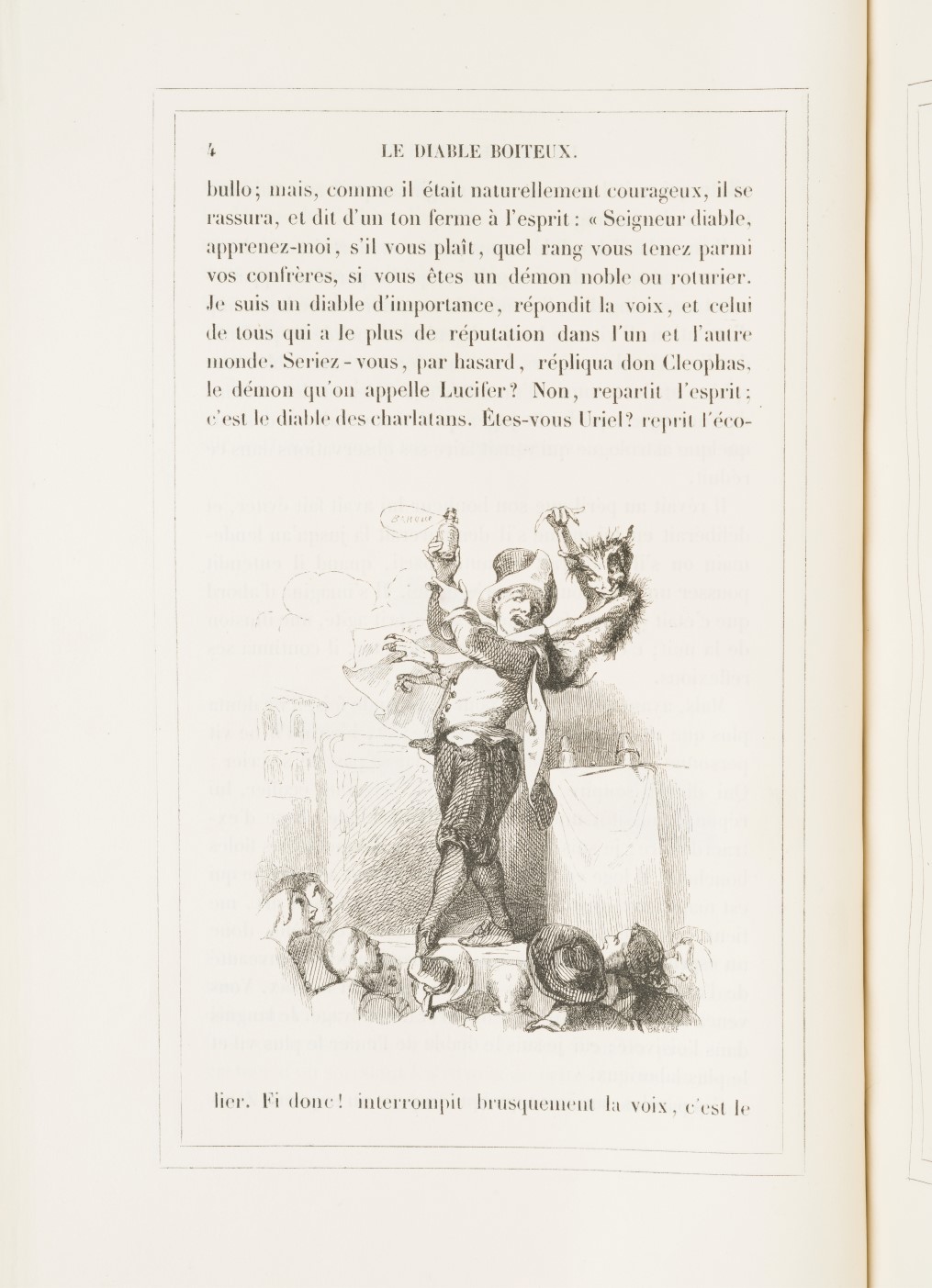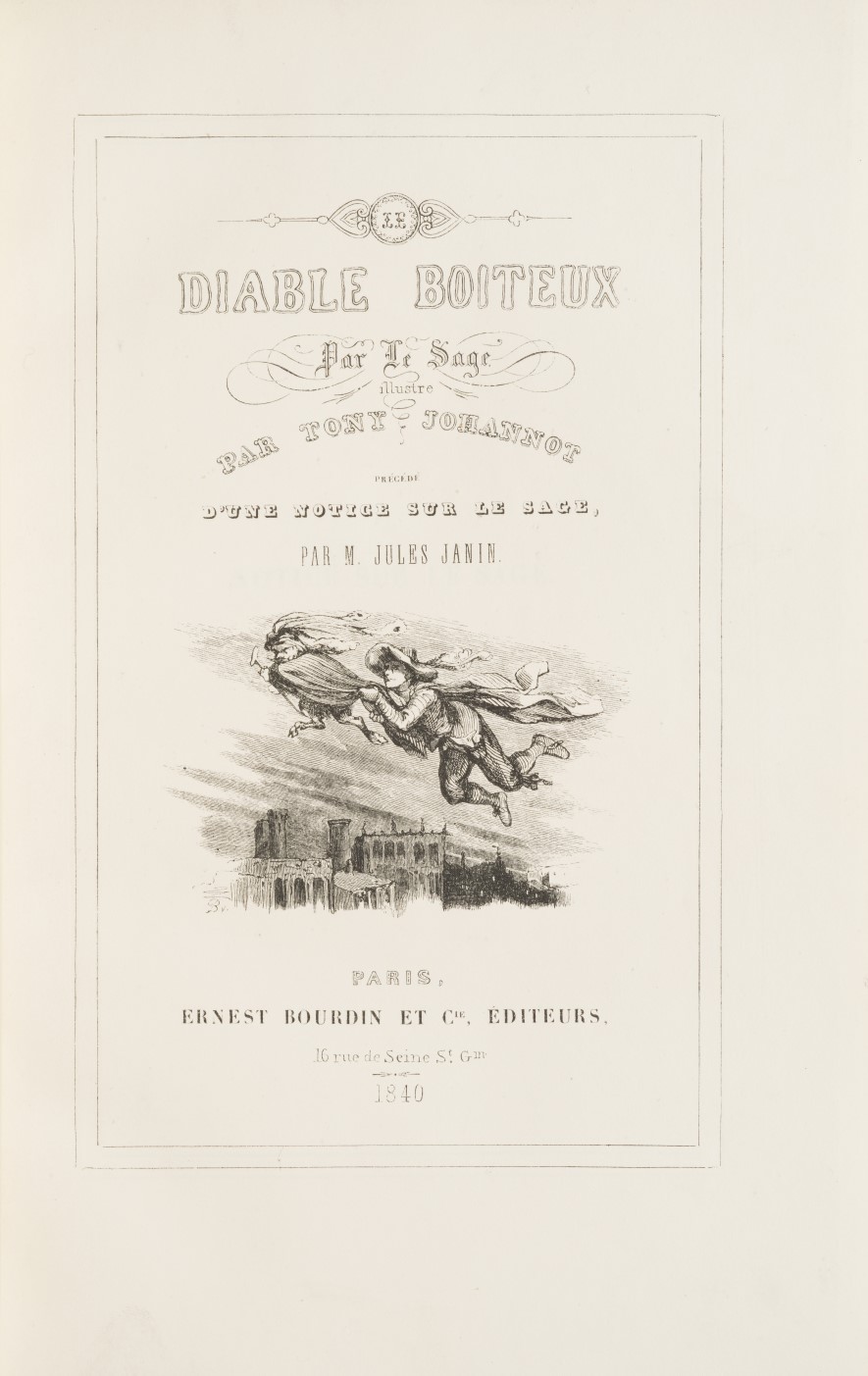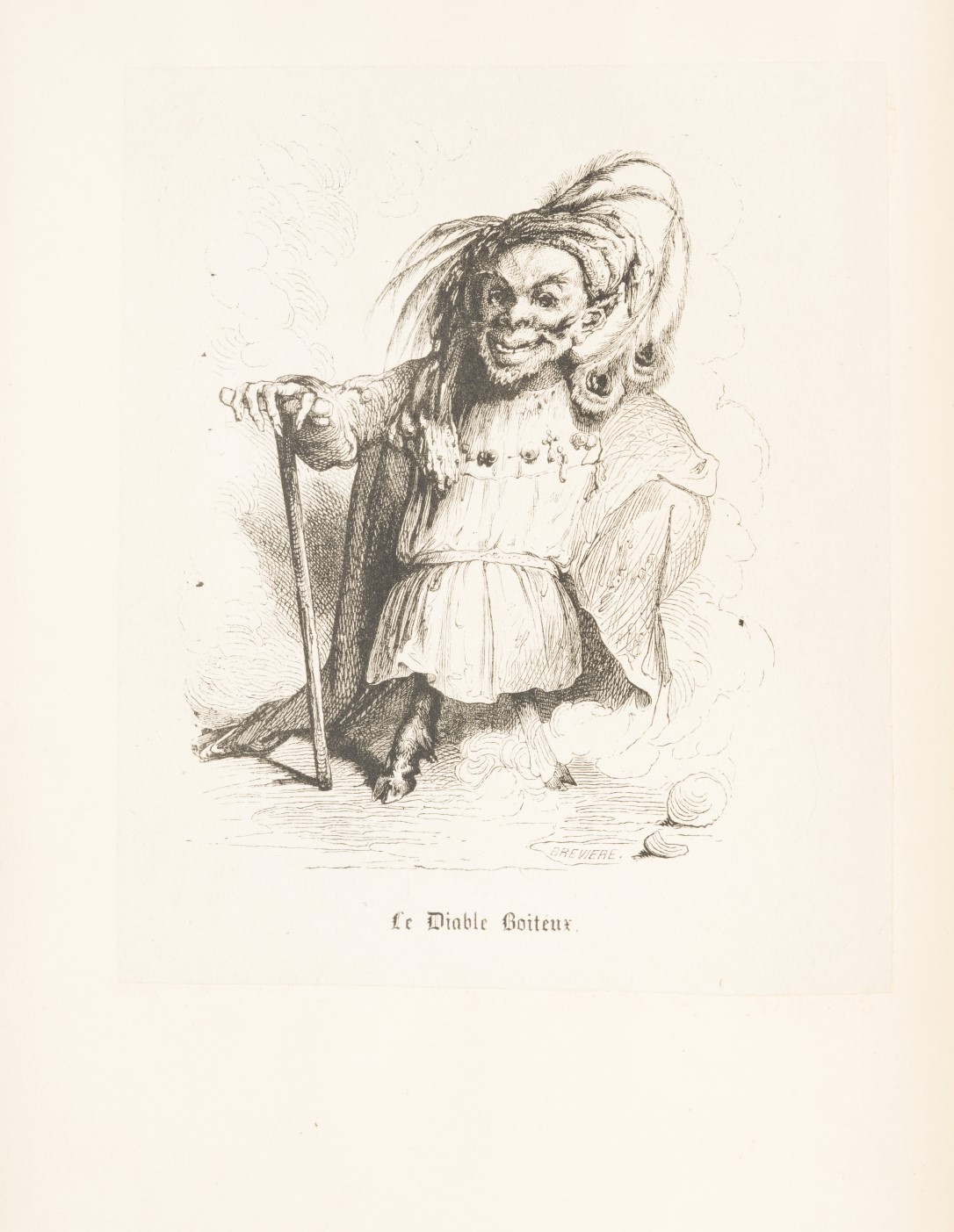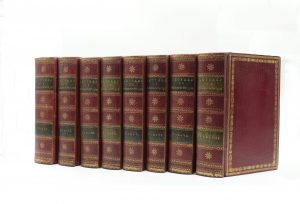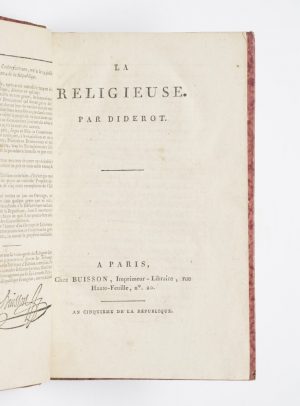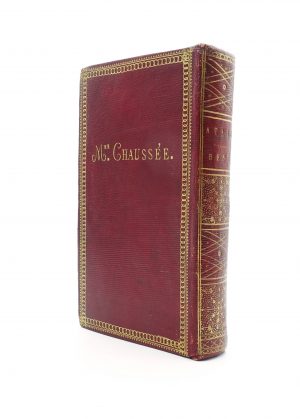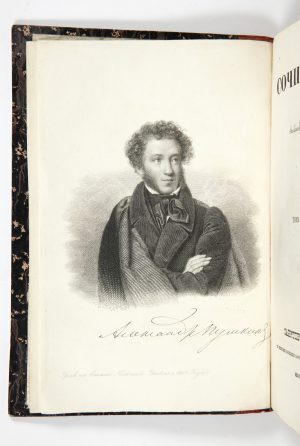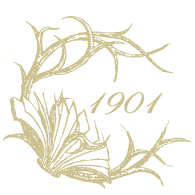LESAGE Alain-René Le Diable Boiteux, illustré par Tony Johannot, précédé d’une notice sur Le Sage par M. Jules Janin.
VENDU
Large 8vo (270 x 182 mm) 2 unn.l, XVI, 380 pp. Red half morocco with corners, spine gilt with raised bands, floral decorated compartments, gilt head (David).
1 in stock
Brunet, III, 1008 ; Carteret, III, 388 ; Cordier, 117-60 ; Vicaire, V, 245 ; Fléty, 53.
Richly illustrated work, the upper cover is preserved. It shows two figures pasting up a poster on a yellow background bearing the title of the work and a representation of the lame devil. The latter reappears on the title page with a vignette borrowed from page 18.
The frontispiece is an engraved woodcut by Brévière after Johannot, printed on chine and pasted, and 140 in-text vignettes adorn the text.
As was often the case in the 19th century, this work was first published in installments. A number of novels that were successful in the 18th century were periodised and offered to the public in issues. Once the entire work had been published, it was possible to have it bound by the publisher.
Le Diable boiteux represents a form of continuity between the 18th and 19th centuries. It is a story of diablerie and enchantment sprinkled with morality. The Wise Man brings in the demonic figure of Asmodeus, who uses a variety of spells. These elements had everything to appeal to the nineteenth century, which was striving to create a French fantastic.
The very first use of the term "genre fantastique" occurred in 1798 in an article in La Décade philosophique, littéraire et politique, which was based on the work of Le Sage (no. 17, 30 December 1798).
The story and its characters offer Tony Johannot a wide range of possible representations, which he sets out to portray. As always, the airs are marked, his devil is expressive, repulsive with an air that is sometimes malevolent and sometimes mocking. He accentuated the devil's characteristics, and the face was made up entirely of angles: the nose, chin and horns were constructed in a series of sharp shapes that exacerbated the character. Johannot also had fun twisting his Asmodeus in all directions. He often embraces Cleofas, the hero of the novel, suggesting a diabolical hold. The headbands, lettrines, and the cul-de-lampe are just as elaborate as the vignettes, making the work dynamic and rich.
This large 8vo is actually produced in quires of 4.
The cover has a small hole on the left-hand character, otherwise a very fine copy, fresh and free from foxing.

